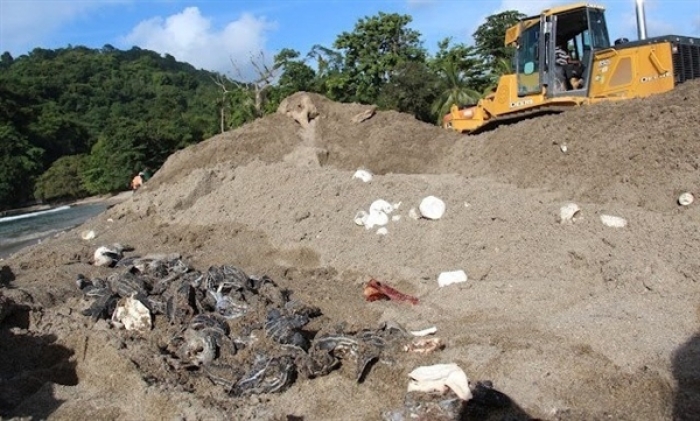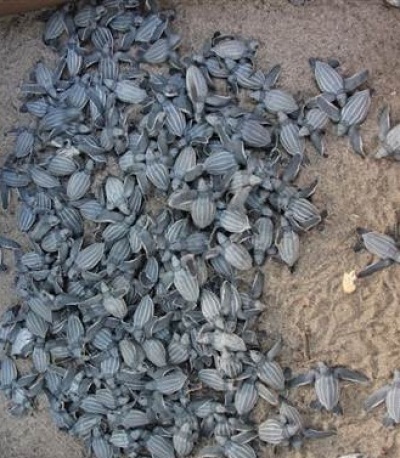Sea Turtle Eggs: 20,000 Babies, Eggs Killed by Bulldozers (PHOTO)
Up to 20,000 sea turtle hatchlings and eggs have been tragically crushed by bulldozers attempting to divert a river on Trinidad beach in the Caribbean. A photo released by a conservation group, which is calling for a government investigation, shows the dead leatherback turtles and eggs on the beach.

Over the weekend, bulldozers and excavators, used by workers trying to change the direction of a shifting river, smashed and killed sea turtle eggs on the remote beach. The Grand Riviere beach in northern Trinidad is reportedly the world's most densely populated nesting site for leatherback turtles, an endangered species.
"Unfortunately the engineers in charge bulldozed a far greater portion of beach than necessary, and they did destroy many viable nests," the Papa Bois Conservation group said on Facebook.
Marc de Verteuil of the Papa Bois Conservation group said he saw "thousands" of crushed sea turtle eggs as he was driving near the beach.

A local environmentalist, Sherwin Reyz, also confirmed that about 20,000 eggs and hatchlings were killed during the bulldozing. She and other locals tried to rescue hundreds of sea turtle babies but couldn't save them all; many were fatally injured or were eaten by vultures or dogs.
The Papa Bois group is outraged over the tragedy and is calling on the government to investigate.
"It is important to investigate how this was allowed to happen, and to find a solution so this won't reoccur," the group said.
The group is questioning why the government let the bulldozing crew to operate "without any qualified supervision."
Female leatherback turtles lay around 100 eggs at a time, but less than 1 percent survive to become adults. The females dig nests in the sand on the beach and then lay their eggs. Eggs are left to incubate in the sand, then become hatchlings that crawl across the beach to find their way to the ocean.
Leatherbacks, the largest in the sea turtle family, can grow up to 7 feet long and weight 2,000 pounds. Their lifespan can be as long as 100 years.





























